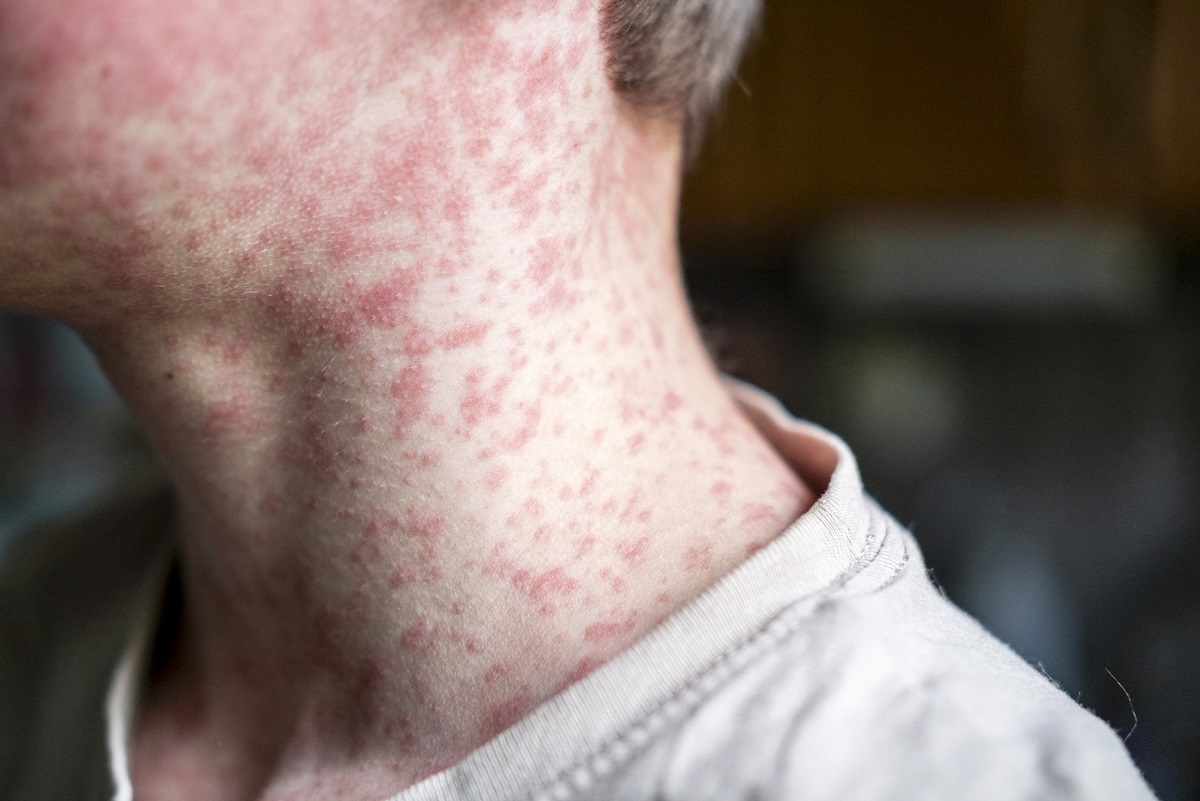Return of the First Disease
Did you know there are six numbered rash diseases in children? Measles, also known as First Disease, was declared eliminated from the US in 2000; however, in recent weeks, over 350 cases have been diagnosed in west Texas and surrounding areas. So far 40 of those afflicted have been hospitalized and two have died.
Before we had an effective vaccine, measles was a major health threat, especially in young children. In the US during the decade before vaccine licensure, about 48,000 persons were hospitalized and 400-500 died from the disease annually. Globally, about 100,000 people continue to die of it every year, with the majority of these cases occurring in Africa, Asia, and the Middle East.
The virus is contagious and infects over 90% of susceptible individuals who have close contact with an infected person, with one person potentially infecting up to 12-18 others. The patient first becomes ill with fever, runny nose, red, irritated eyes, and cough. Fevers rise as high as 103 to 105 degrees and continue for about 6 days. The characteristic red rash appears after 3-4 days after initial symptoms start. The cough lasts for 1-2 weeks and can lead to a life-threatening form of croup, where the patient swelling and mucus blocking the windpipe. Other severe complications can include pneumonia, blindness, brain inflammation, permanent neurologic disability, and death. Last year, 40% of US cases were hospitalized; antibiotics and antiviral medications are not effective.
With state-of-the-art supportive care some of these complications can be prevented. However, most medical providers today have never seen a case of measles. Diagnosis will likely require blood or nasal specimens to be sent to the state laboratory and may take several days. This means early recognition and diagnosis is challenging. I have seen only one case, in the late 1980’s, a very sick baby with pneumonia and respiratory distress who required treatment in the pediatric intensive care unit. In 2025, almost no one is experienced in treating this serious disease, making prevention of infection the best approach.
By far the best way of preventing it is vaccination. A safe and effective vaccine was licensed in the US in 1968 and has been given to hundreds of millions of people to-date. The vaccine is typically given at 12 months of age and again at 4-6 years of age. It is 97% effective at preventing infection. In recent years, there have been several outbreaks in the US annually when an unimmunized traveler brings the virus home from abroad. These generally diminish after a few weeks because most people are immune. If 95% of individuals in the community are immune, it is very difficult for the infection to gain a foothold.
In Gaines County, Texas, where the largest number of cases have occurred in the recent outbreak, only about 82% of kindergarten children have received 2 doses of the vaccine and are considered fully immunized. Almost all the recent cases (94%) have occurred in persons who were not completely vaccinated or whose vaccine status was not known.
Here in Idaho, we have the lowest rate of measles immunity in the country. Fewer than 80% of our kindergarten children are completely immunized, less than in Gaines County, and this number has been dropping since 2019. This means our community is increasingly vulnerable to suffering a sustained outbreak of this deadly disease.
You may have heard that measles can be prevented by taking vitamin A. This is false. Vitamin A can help prevent some complications in patients but is not an effective preventive measure. Excessive doses of vitamin A are toxic and should be avoided. Isolation of exposed individuals can help prevent the spread but is VERY inconvenient. Because the rash does not appear until 7-21 days after contact, it is recommended that susceptible persons be isolated for 21-28 days after exposure.
What about measles parties? This is an old and bad idea of gathering with a sick person to purposely become infected and thus gain future immunity. This is a serious disease and some of the complications are still beyond our control. Please don’t consider this dangerous practice!
There is a better way of gaining immunity. The vaccine is safe and effective. I strongly recommend it for my patients and gave it to my own children. I believe in transparency about risks and side effects. It is a live vaccine, meaning a weakened form of the virus is injected and briefly grows within the body. Side effects include fever in about 15% and mild rash in about 5% of recipients 5-12 days after the first dose. The vaccine virus does NOT lead to the other complications of natural measles. In particular, the idea that measles vaccine causes autism has been thoroughly researched and is false.
If your child is not fully immunized, please consider scheduling an appointment to discuss this with your healthcare provider.
A list of Saint Alphonsus pediatricians who accept online scheduling can be found here.
Dr. Michael Aldous is a Pediatrician at the Saint Alphonsus Medical Group Pediatrics clinic on 12th Avenue in Nampa.


